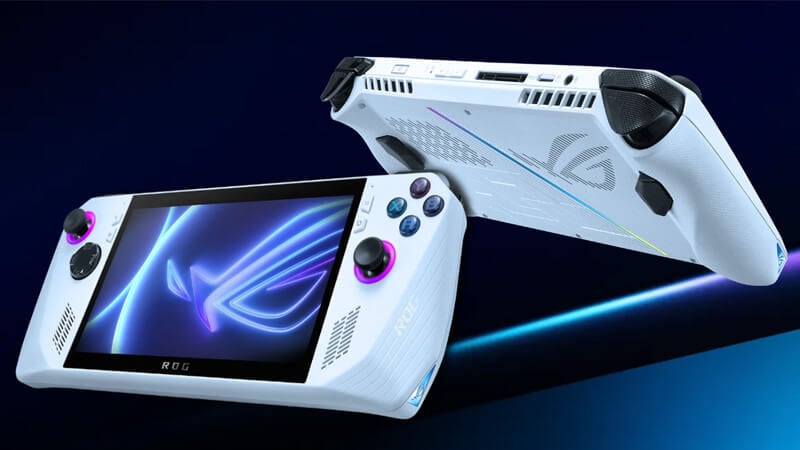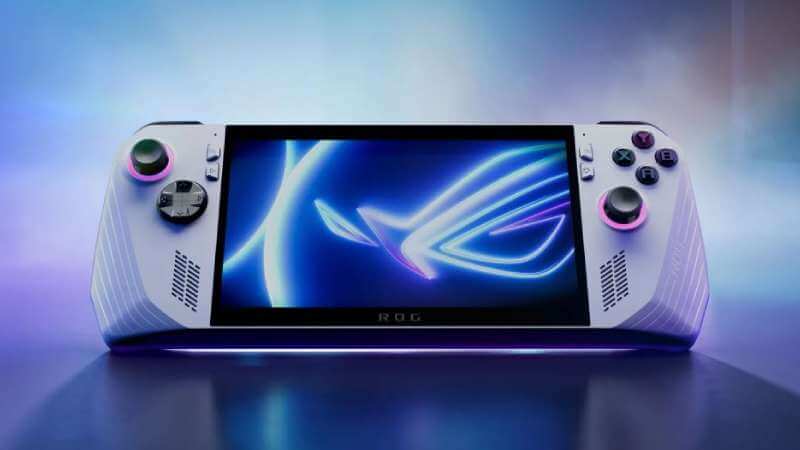Valve’s Steam Deck has been reigning supreme in the PC handheld space since its launch in February 2022. There have been many new kids on the block, but none have garnered a following that holds a candle to the Steam Deck. It has even been giving Nintendo’s Switch a run for its money, as people who also have a PC have opted to go for a Steam Deck because of its cross-platform features instead of a Switch. But the recent introduction of Asus’s ROG Ally has led many to believe that the “Steam Deck killer” has arrived. But it might not be that simple, and whether you will prefer one or the other is more complicated than that, depending mainly on what you expect from your gaming handheld.
With more and more exclusives making their way to PC, people who want their gaming on the go have some really good options now. But since the Steam Deck requires its own ports (done by Valve), is waiting for your favorite games to get Steam Deck verified really worth it with the Asus ROG Ally on the market?
Below you’ll find everything you need to know which device on which device is best for you, so without further ado, let’s get into it!
Hardware Level Comparison Between Asus ROG Ally & Steam Deck

While Valve and Asus offer their devices at multiple price points, we’ll look at the two highest specced models that come with a similar price tag. The highest-end Steam Deck at $649 runs AMD’s Zen 2, and the $699 Asus ROG Ally runs AMD’s Z1-Extreme chip. Both also come with 512GB storage, but both can be upgraded to run bigger SSDs.
Display
Both handheld consoles come with a 7″ display, but there is a clear objective winner here. The Steam Deck comes with an 800p 60Hz display, while the ROG Ally has an amazing 1080p 120Hz display that blows the Steam Deck out of the water!
That’s not where the ROG Ally’s display stops. Because even being sharper and sporting 120Hz, the ROG Ally has nearly half the input delay of the Steam Deck, at around 60ms. The reason for this major discrepancy is possibly the Proton Layer used by Valve to make PC games run on the Linux-based Steam OS. But for anyone who wants to play their games online and maybe even play competitively, the ROG Ally is going to be the best option.

Controls
The ROG Ally and the Steam Deck aim to emulate a console controller-like experience. But there is a clear winner here again, but it isn’t the ROG Ally.
Both handhelds (PCs?) have run-of-the-mill D-pads, analog sticks, face buttons, and back buttons. But the Steam Deck really flexes its plethora of control options here by not only having twice the number of back buttons when compared to the two that the ROG Ally has but also featuring two touchpads as well.
The ROG Ally has a much better D-Pad when it comes to playing side-scrollers or fighting games, but many have reported that its face buttons tend to get stuck occasionally. And let’s not forget that the ROG Ally has RGB around its control sticks, which may not have any practical use other than draining the battery, but it does add some style points.
Battery & Performance
Speaking of the battery, the battery life is where the Steam Deck edges out a small lead. When running simpler games that aren’t that resource intensive, the Steam Deck sips power in comparison to the ROG Ally. But if you’re pushing either device to its limits and playing a demanding game, don’t expect to play for longer than one hour unless you’re plugged in.
When it comes to performance, there is no real competition here whatsoever. The Asus ROG Ally not only outperforms the Steam Deck in virtually every graphically demanding game but does so while running them at higher resolutions, higher graphics settings, and higher framerates.
Here’s Why The Asus ROG Ally Is Better Than The Steam Deck

Since the hardware comparison is made, and the ROG Ally is the clear winner, the software is where most people are having doubts before pulling the trigger. While the Steam Deck is running on Valve’s own Steam OS based on Linux, the ROG Ally is running Windows 11 but with its own Armory Crate on top, which is good, but it is having some issues with the current update. By using Windows 11, Asus has solved some of the most significant problems with the Steam Deck, namely compatibility limitations.
Using Other Launchers And Playing Older Games
Steam verifies games for the Deck fairly quickly, but even that won’t be a requirement on the ROG Ally. But that isn’t where the benefits of Windows 11 stop. When using Windows, you can play games that aren’t on the Steam store. So stores like Epic, GOG, Battle.net, and Xbox. etc., will become accessible. But more importantly for some, you will be able to play really old games if you want to, using a compatibility layer.
Console Streaming, Remote Play, And Emulation On ROG Ally
If you want to experience console gaming on your handheld PC, you can add Steam PlayStation or Xbox games to your Ally or Remote Play from the console you already own. And if you’re not afraid to get technical, you can easily emulate games from an endless number of consoles on your Ally. But only do that if you actually own the games you’re emulating.
Clearly, the options when using a Windows machine are endless and will provide you with far more flexibility over what you want to play and how.
Bonus Tip For ROG Ally
A lot of people who have either reviewed the ROG Ally or have bought it tend to say that Windows 11 isn’t that intuitive when it comes to being a gaming operating system. Some leaks suggest that it might not be the case in the near future, but if you want to improve your experience right now, here’s a bonus tip!
Go to Steam on your ROG Ally, turn on Big Picture mode, and then set it up to launch on boot. This way, whenever you turn on your Ally, it will go directly into Big Picture mode while still letting you go back to Windows 11 whenever you want. This is especially great since Valve has made its Big Picture mode look a lot more like the Steam Deck’s UI.
Conclusion

If you already have a Steam Deck, an upgrade isn’t necessary unless you want the upgrades or can’t handle the compatibility limitations. But if you are thinking of buying one or the other, it really depends on what you need from your handheld.
If you want something that works like a gaming laptop that can run all your games while also working as a mini PC that you can even work on, enjoy hopping from one launcher to another, and even want to do some classic console emulation, the Asus ROG Ally is the best option for you.
Although it may not seem possible to work on the ROG Ally, it is quite simple. If you have the requisite peripherals, like a keyboard and mouse, and don’t mind plugging it into a monitor, then you have yourself a portable PC in case of emergencies.
But if you can’t stand using Windows on a 7″ touchscreen and want your handheld gaming experience to be extremely straightforward, as console-like as possible, and you’re okay with losing some performance, then the Steam Deck is still a valid option that you won’t go wrong with.





